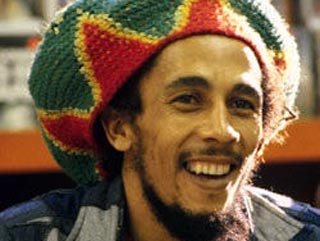
Vybz Kartel (born Adidja Azim Palmer on 8th January, 1978) is a popular Jamaican dancehall deejay.
Vybz Kartel was born at Kingston's Victoria Jubilee Hospital. Originally from Waterhouse, Kingston, he was raised in the Waterford community of Portmore, St.Catherine. Adidja attended Calabar High School in Kingston but was expelled as a teenager. Determined to continue his education, he completed his studies at a tutorial technical school. The young Adidja was exposed to a wide variety of music from a tender age by two uncles who happened to be aspiring musicians themselves. Every weekend he would be treated to new musical offerings on his uncle's old component set, ranging from Sam Cooke to country and western ballads to Ninja Man, who became one of his musical foes. At the age of 10 his favourites included artists as diverse as Papa San, Charlie Chaplin, Will Smith and KRS-1, all of whose lyrics he would write down and study word-for-word, performing them later for the entertainment of friends. Deciding he wanted to be a deejay, he began writing his own lyrics at the age of 11.
Career
Early career
Adidja and his friends Arif, Boyie, and Saif, often frequented the weekly Gong Talent Show at the now defunct Coney Amusement Park on the outskirts of Kingston, but to their chagrin were always gonged off whenever they got a chance to perform. Undeterred by his weekly failure to impress the talent show audience, Adidja decided to hone his skills and concentrate on winning over his own community of Waterford until he was ready for bigger things. With that goal in mind, on weekends he would practise his art on neighbourhood sound systems Soul Signal and Electric Force. In 1993, the young Adidja, now in his early teens, recorded his first single Love Fat Woman for Alvin Reid's One Heart Label under the name Adi Banton, a name he chose in tribute to Buju Banton, another of his role models. He recorded several more tracks for local producers, perfecting his craft until 1996, when he and two friends, Mr Lee and a singer called Escobar, decided to form a group. One night, after watching a movie about Pablo Escobar and his infamous cartel, Adidja came up with a name for his trio: Vybz Kartel.
Career route
Vybz Kartel's new role as Killer's protege (a spot once held by prodigal prodigy Baby Cham) caught the attention of the public and led to a career rise, first as a ghost-writer for Bounty, Elephant Man and other members of the Scare Dem Crew, followed by collaborations with Bounty Killer such as Gal Clown and Girls Like Mine (Liquid Riddim), then finally coming into his own with early hits such as Gun Clown, Guns Like Mine (Trafalga Riddim), Badman (Panty Raid Riddim), Bus Mi Gun Like Nuttn, Most High (Mexican Riddim) and War Organizer (Clappas Riddim). He also had a string of successful collaborations with Wayne Marshall, such as New Millennium (Mad Antz Riddim), Why (Krazy Riddim) and Why Again (Good To Go Riddim). This led to Vybz Kartel being crowned Deejay of the Year at Stone Love's 30th Anniversary, 2002.
From the outset, Vybz Kartel was more of a 'badman' deejay than a pop artist. In his early career he mostly concentrated on unapologetically hardcore, undiluted songs extolling the virtues of guns, sex and ganja, but his biggest hit was yet to come. He had success with more mainstream, club-oriented singles such as Big Man (Engine Riddim), Pussy Jaw (Mad Antz Riddim), Sweet to the Belly (Egyptian Riddim) and Bruk Buddy (G-String Riddim), but in late 2003 his single Tekk Buddy on the Thunder Clap Riddim proved to be the one which catapulted his career into the stratosphere. The single stayed on the charts for months and spent weeks at the number 1 position, and finally brought Vybz Kartel to the attention of those who hadn't yet become aware of him.
Name change
In late 2006, Vybz Kartel reportedly changed his stage name to "Addi di Teacha". Fans still generally refer to him as Vybz Kartel.
Read more!






